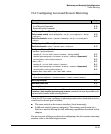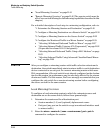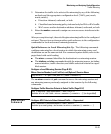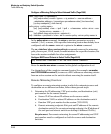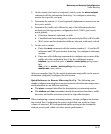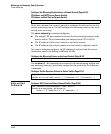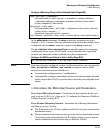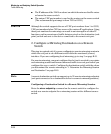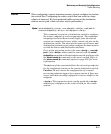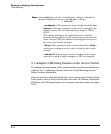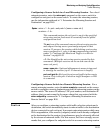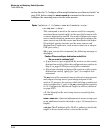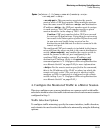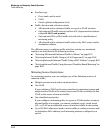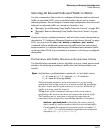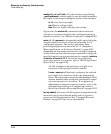
Monitoring and Analyzing Switch Operation
Traffic Mirroring
Caution When configuring a remote mirroring session, always configure the destina-
tion switch first. Configuring the source switch first can result in a large
volume of mirrored, IPv4-encapsulated traffic arriving at the destination
without an exit path, which can slow switch performance.
Syntax: mirror endpoint ip < src-ip > < src-udp-port > < dst-ip > < exit-port-# >
no mirror endpoint ip < src-ip > < src-udp-port > < dst-ip >
This command is used on a destination switch to configure
the remote endpoint of a mirroring session. The command
uniquely associates the mirrored traffic from the desired
session on a monitored source with a remote exit port on the
destination switch. You must use the same set of source and
destination parameters you when configure the same session
on both the source and destination switches.
For a given mirroring session, the same <src-ip >, < src-udp-
port >, and < dst-ip > values must be entered with the mirror
endpoint ip command on the destination switch, and later with
the mirror remote ip command on the source switch. Refer to
the mirror remote ip command syntax on page B-53 for more
information.
The no form of the command deletes the mirroring endpoint
for the configured session on the remote destination switch.
Caution: Do not remove the configuration of a remote
mirroring endpoint support for a given session if there are
source switches currently configured to mirror traffic to the
endpoint.
< src-ip >: This parameter must exactly match the < src-ip >
address you configure on the source switch for the remote
session.
B-51



